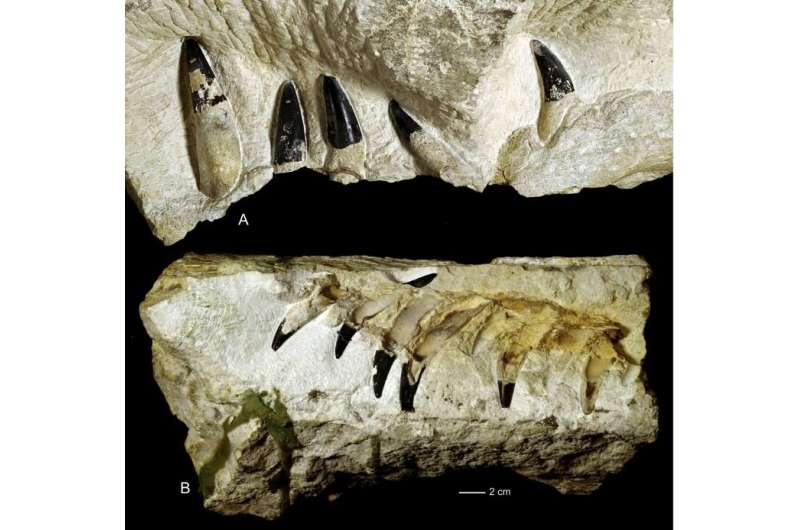November 4, 2019 report
150-million-year-old sea-monster fossil found in Poland

A pair of researchers with the Polish Academy of Sciences has excavated the fossilized remains of a 150-million-year-old sea monster known as a pliosaur. In their paper published in Proceedings of the Geologists' Association, Daniel Tyborowski and Błażej Błażejowski describe the fossil they found.
The researchers report that they found the fossil in a cornfield in a northeastern part of the Holy Cross Mountains near the village of Krzyżanowice. The fossil was approximately 10 meters long and was dated to approximately 145 to 163 million years ago. Their discovery was the first pliosaur fossil ever found in Poland.
The researchers note that pliosaurs were at the top of the food chain during their existence, with some growing to twice the size of a modern killer whale and weighing dozens of tons. They are believed to have been the largest predators of their time on land or in the sea. They were long and thin, with crocodile-like snouts, fins and large teeth. They are believed to have feasted on virtually any creature that lived in the sea, and some land creatures that might have ventured into a lagoon looking for food. The pliosaurs were so large that they could even have killed and eaten the fierce T. Rex. Prior studies have shown that the jaws of pliosaur were up to two and a half meters long, and were four and half times more powerful than the jaws of T. Rex.
The researchers also found the fossilized remains of several other creatures in the same vicinity as the pliosaur, such as ancient crocodiles and turtles. The area in which all the remains were found is believed to have been tropical during the time when the animals lived—prior studies have shown it was an archipelago with warm-water lagoons and reservoirs providing an ideal habitat for the creatures that lived there. The researchers believe sea turtles of the time ate snails and were themselves eaten by crocodiles—they found crocodile teeth marks on some of the turtle shells. Pliosaurs are believed to have eaten any of them it was able to catch.
The researchers will continue their study of the fossils they found and the site—the initial finds, they report, were only the beginning.
More information: Daniel Tyborowski et al. New marine reptile fossils from the Late Jurassic of Poland with implications for vertebrate faunas palaeobiogeography, Proceedings of the Geologists' Association (2019). DOI: 10.1016/j.pgeola.2019.09.004
© 2019 Science X Network





















